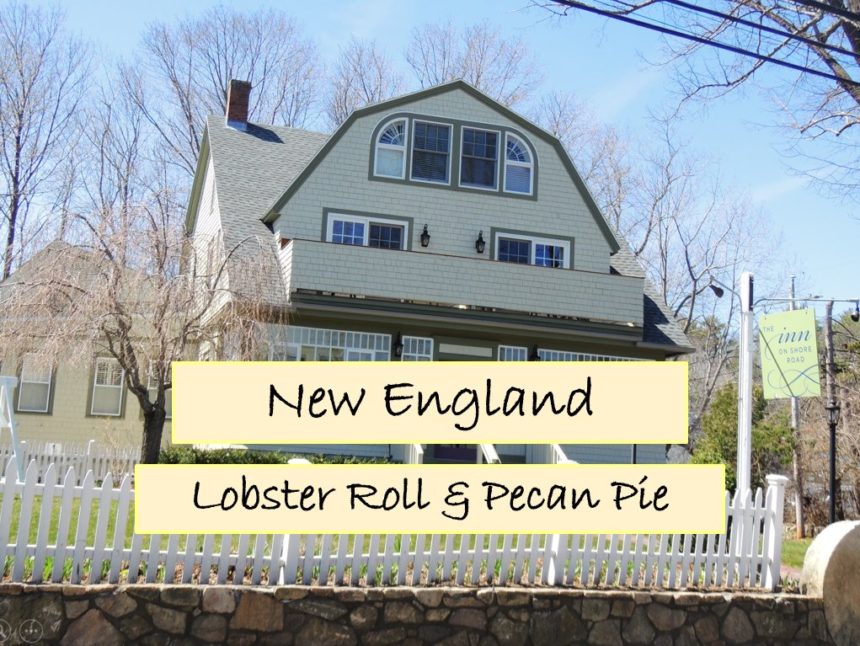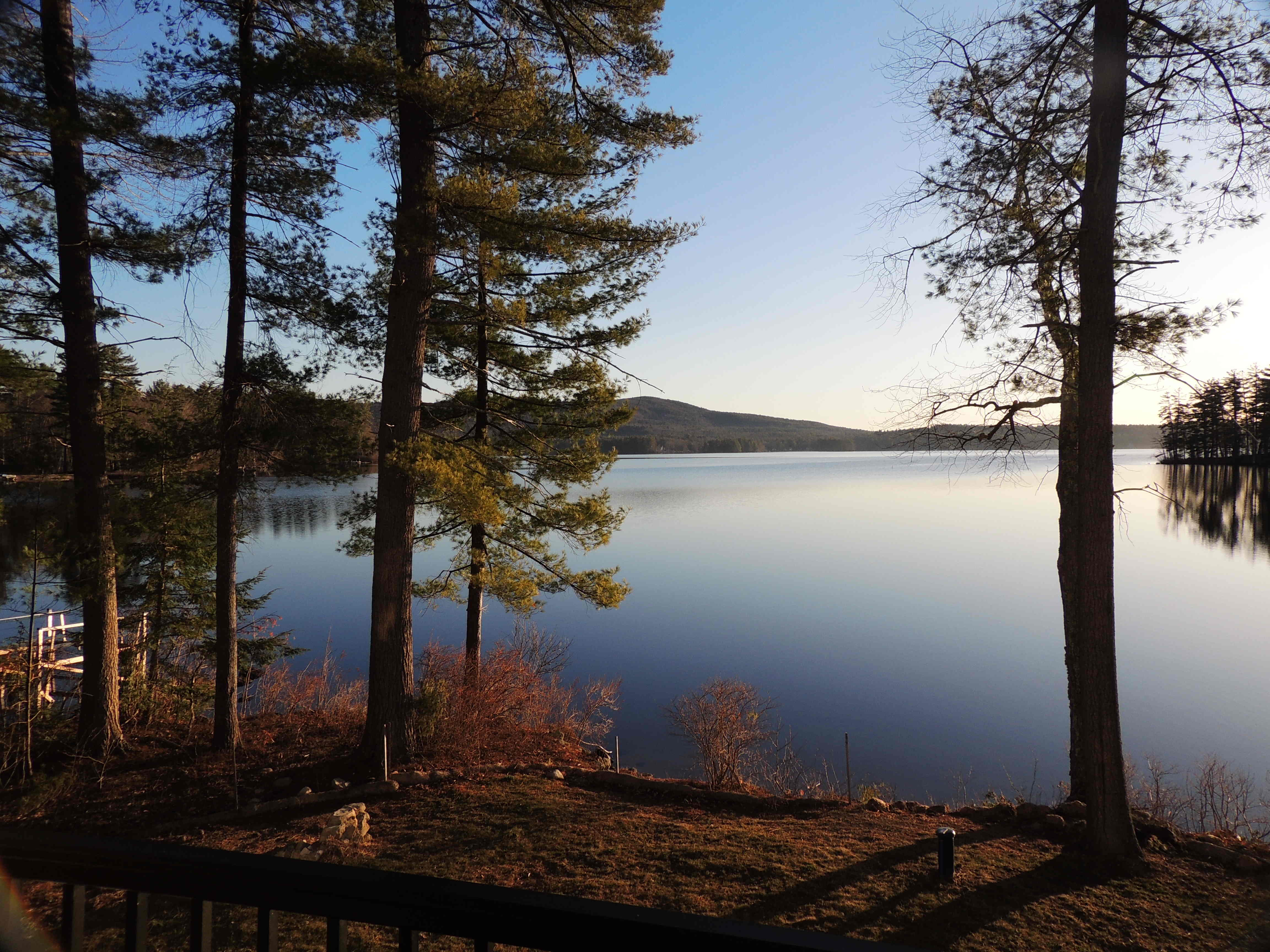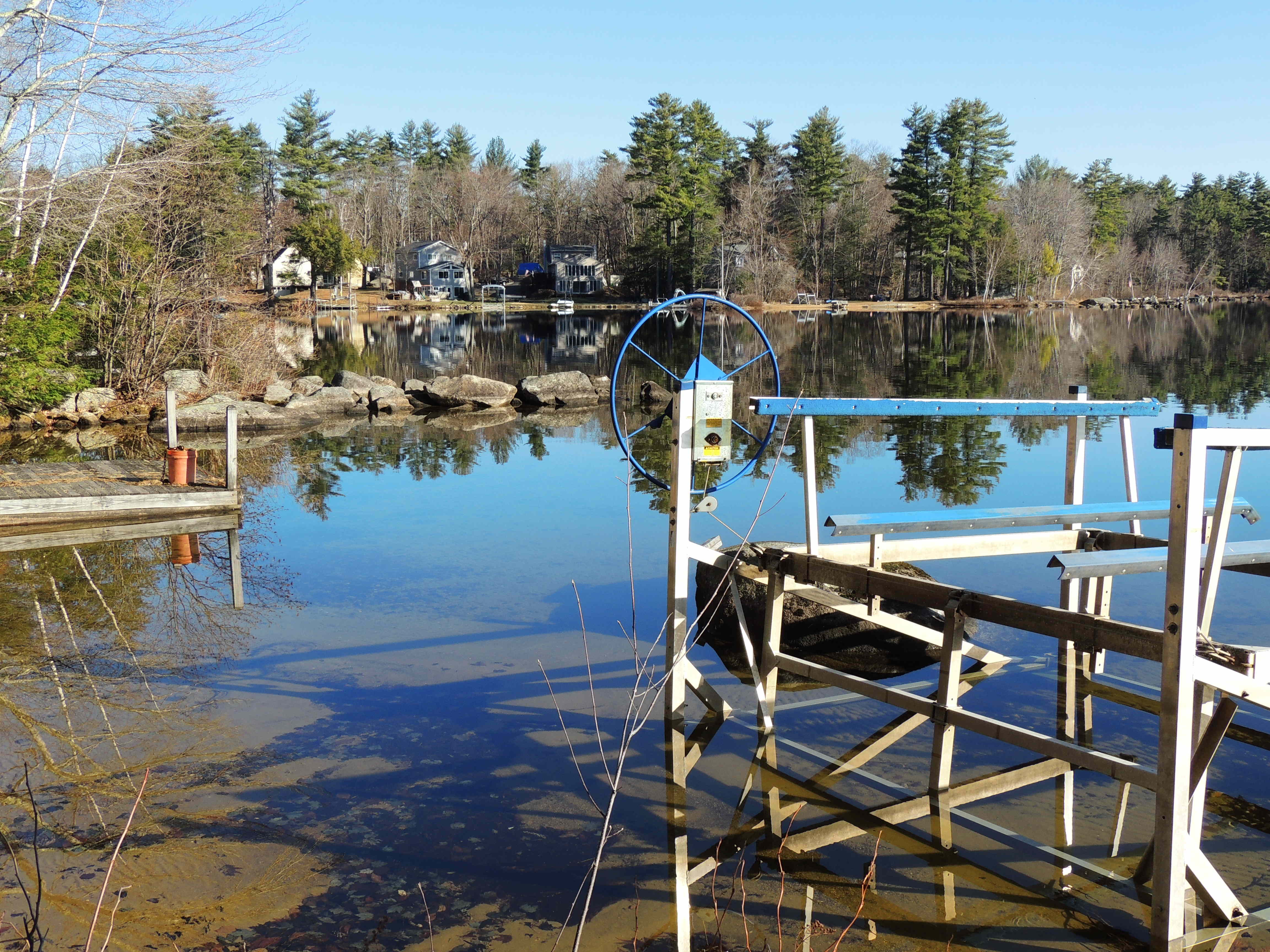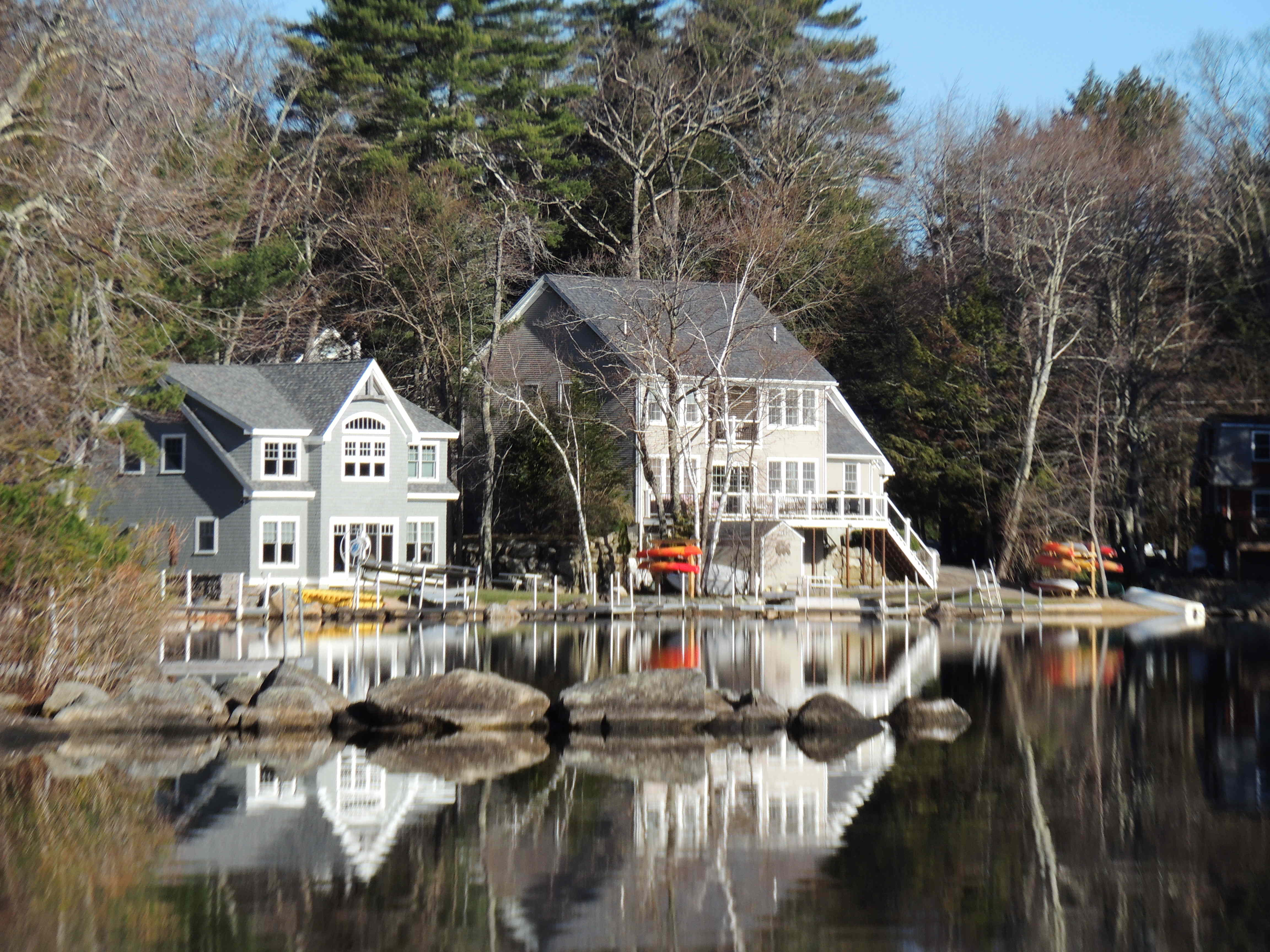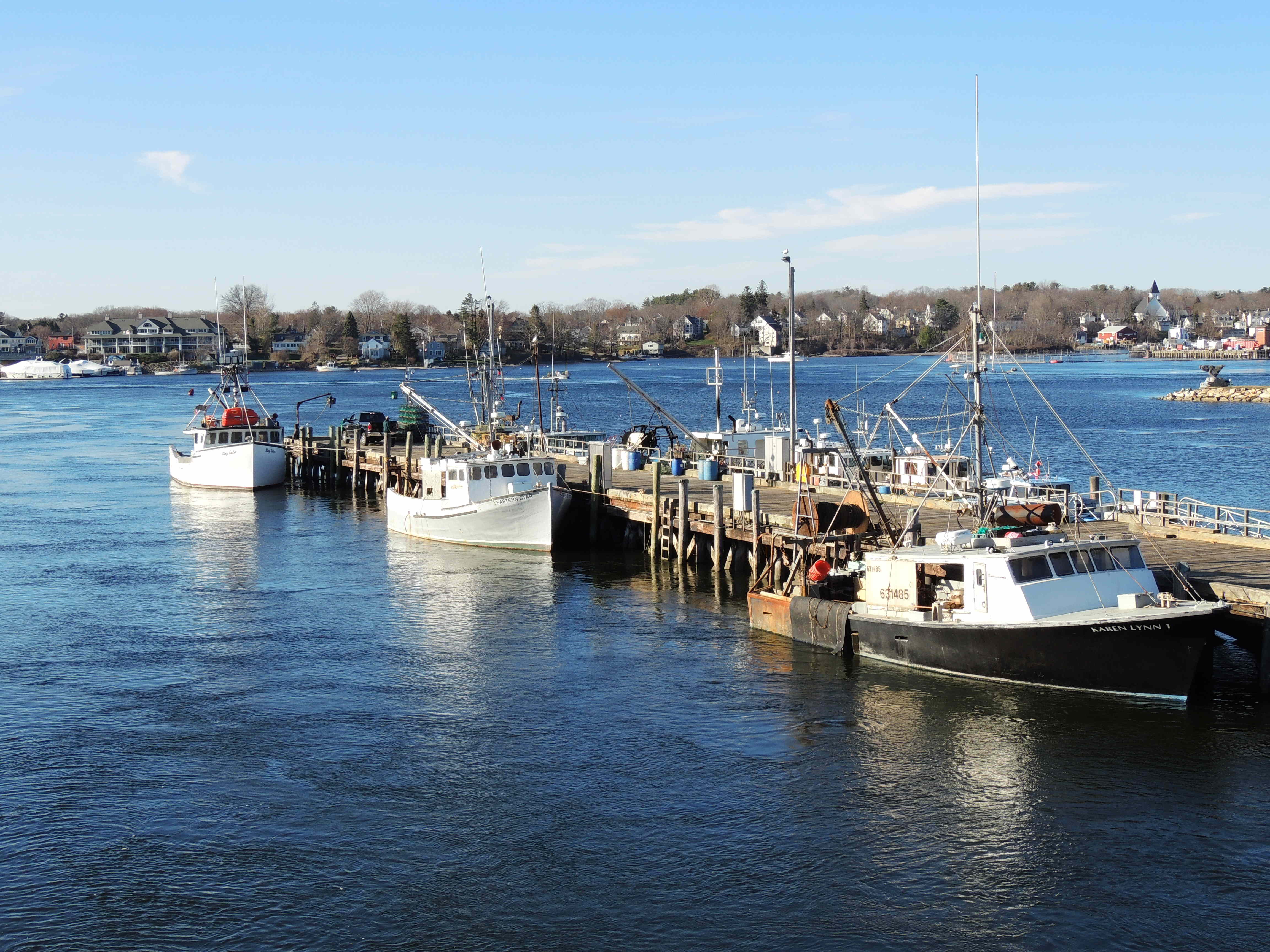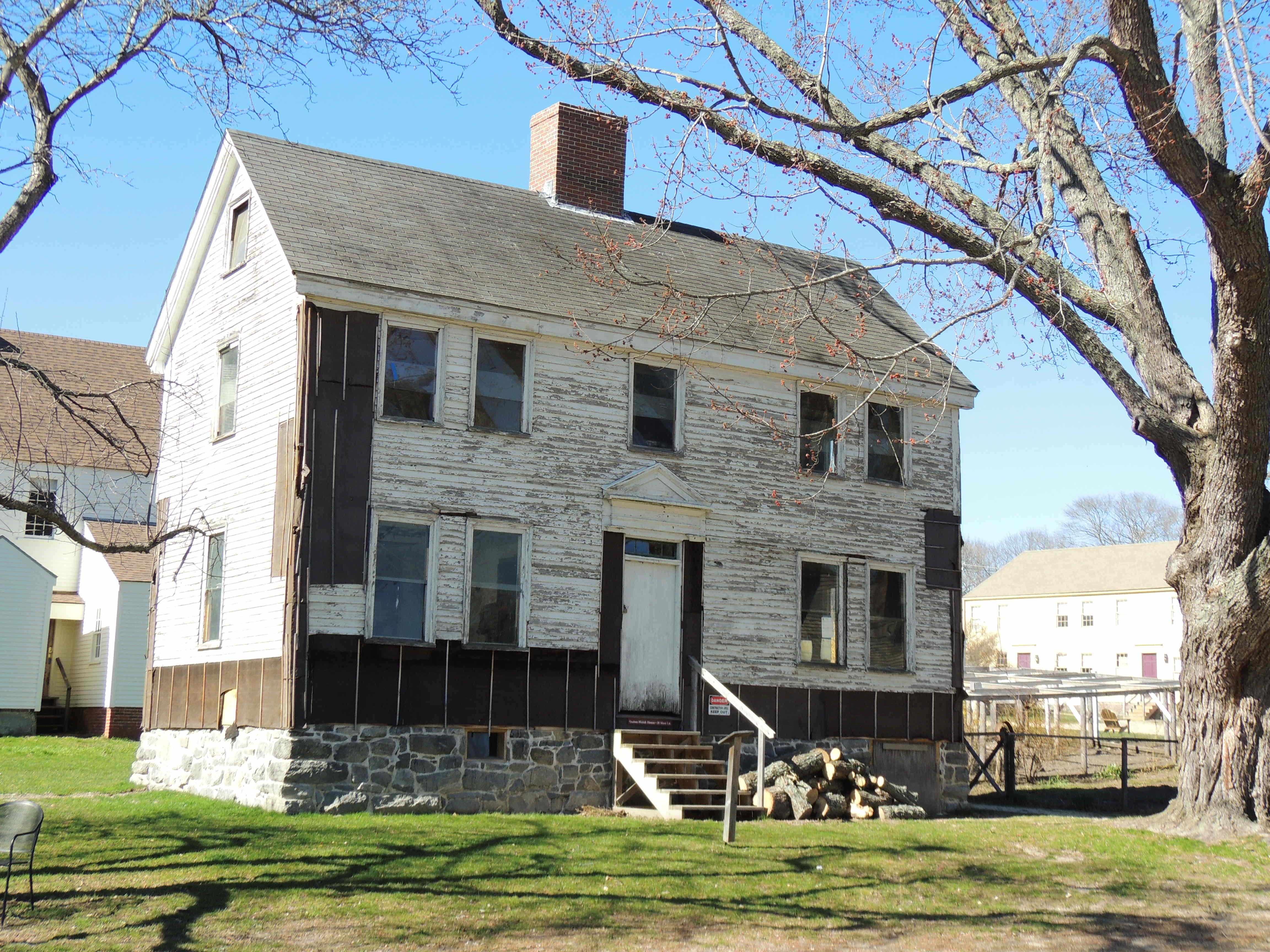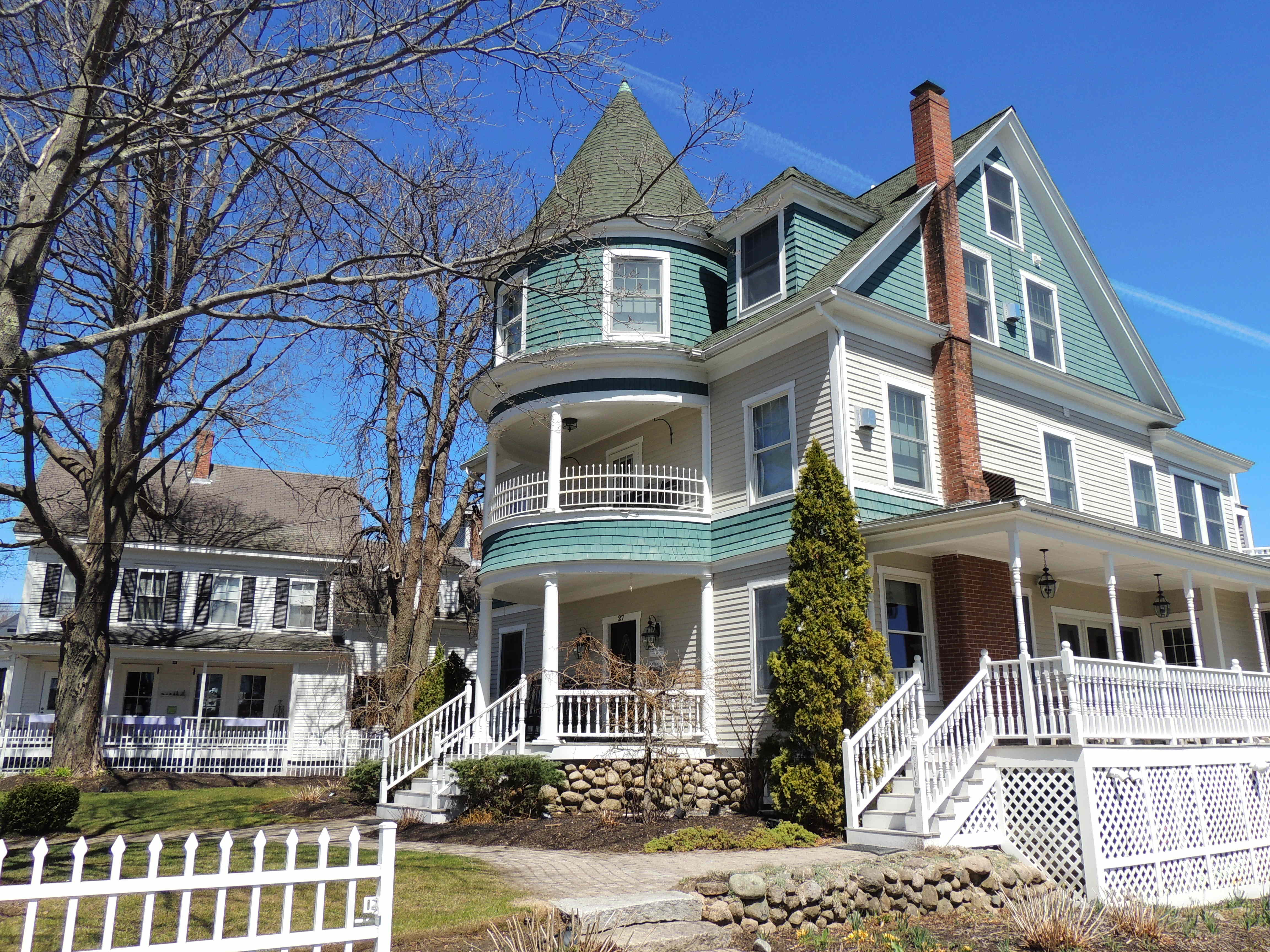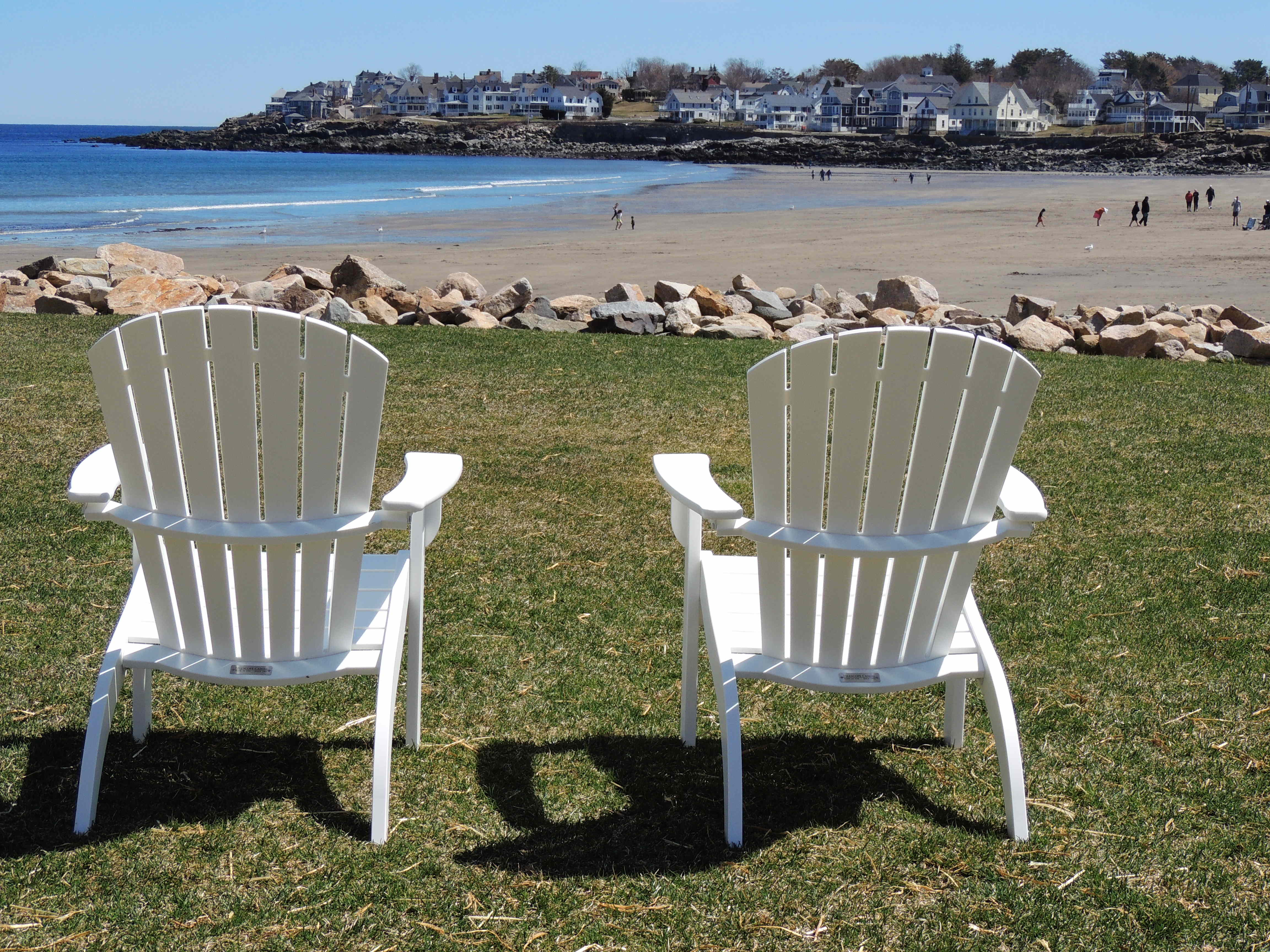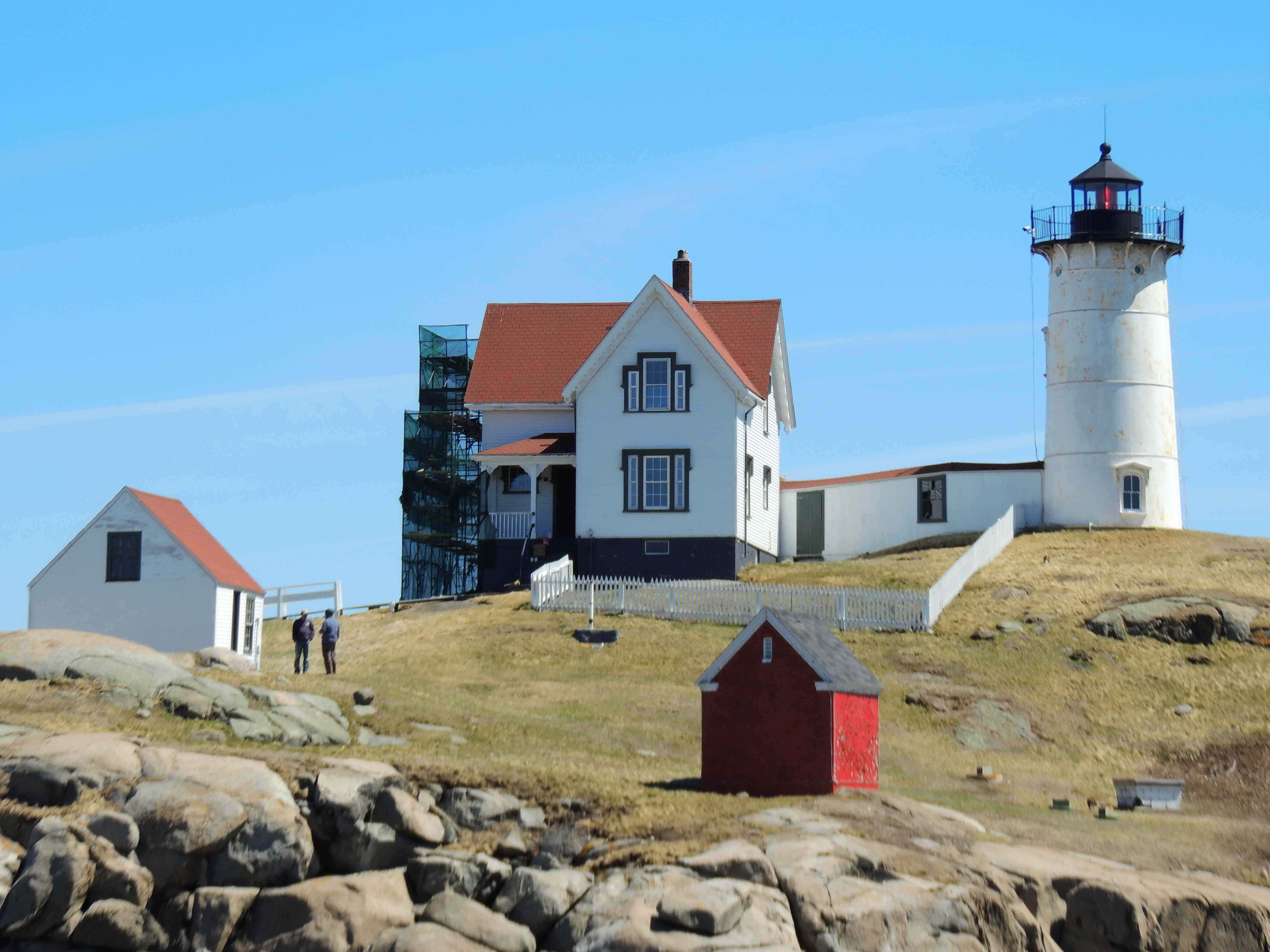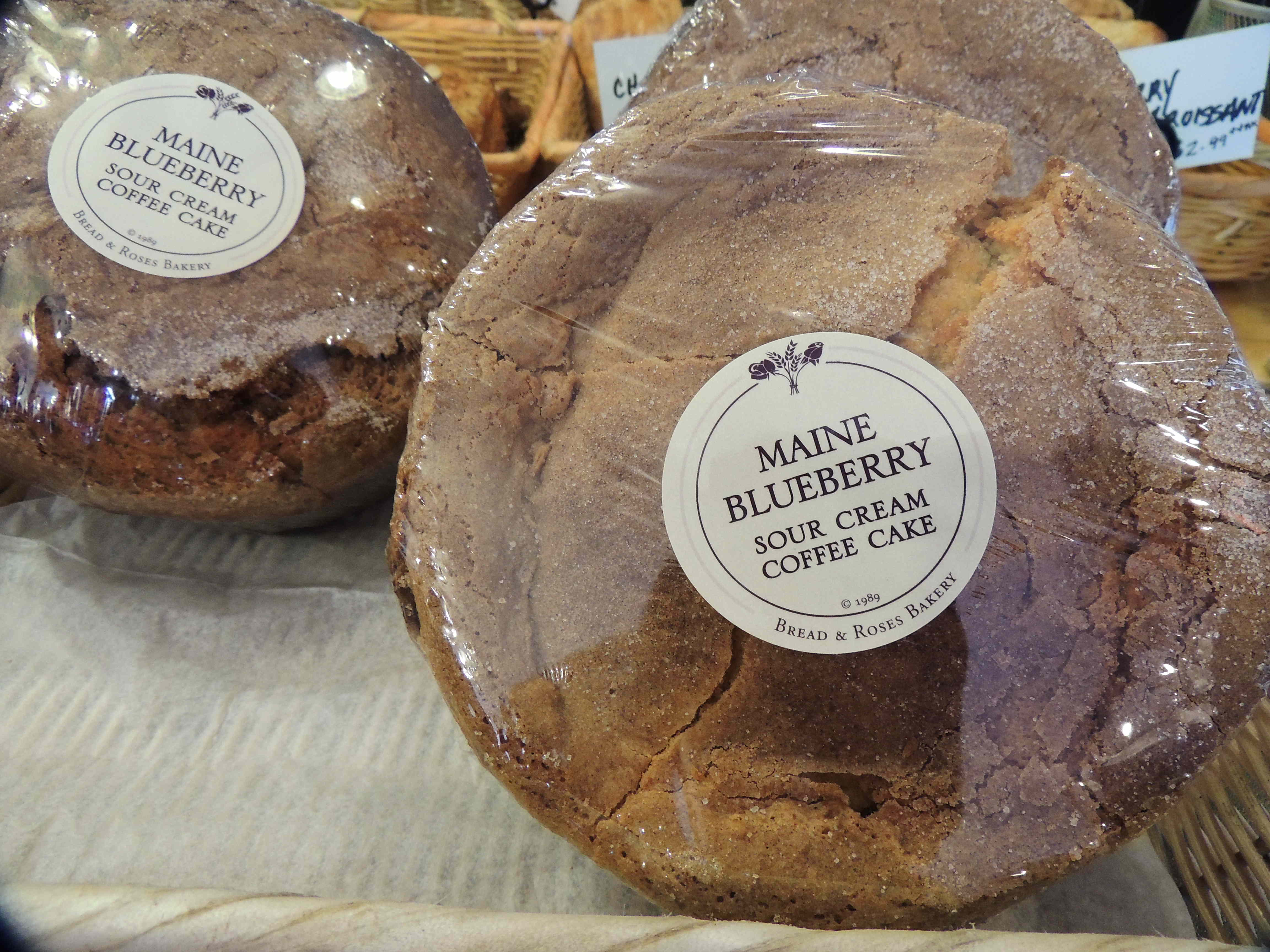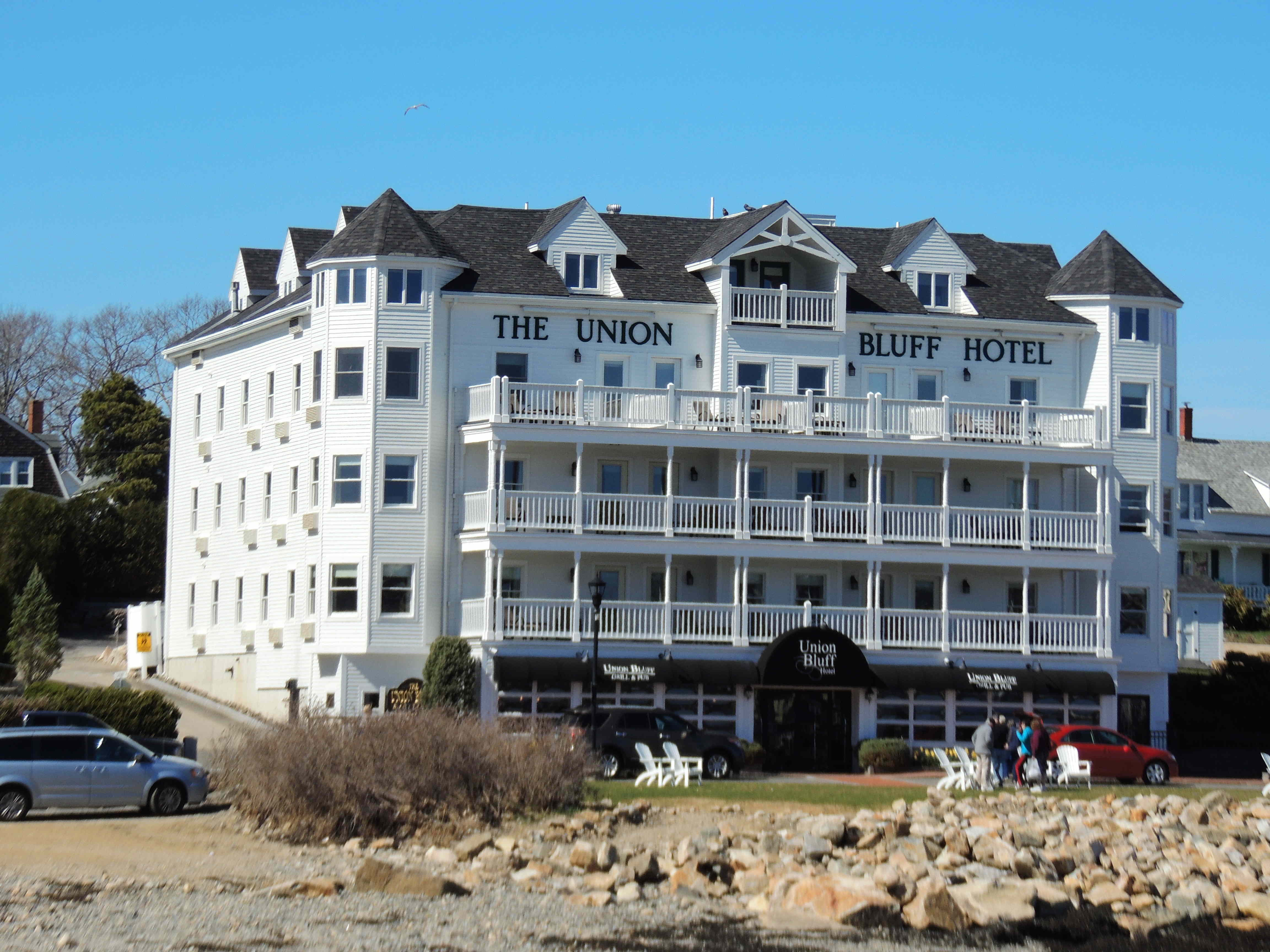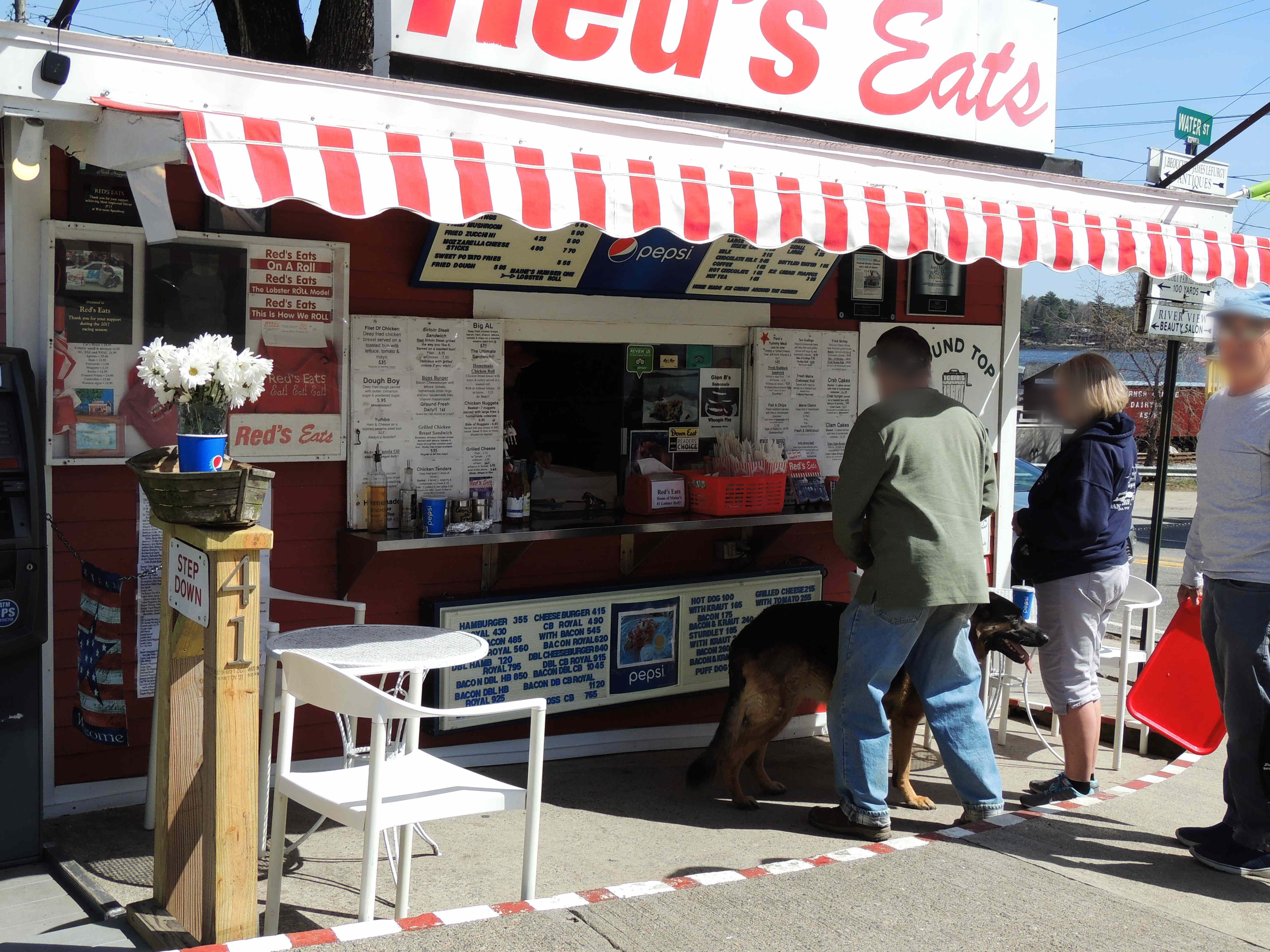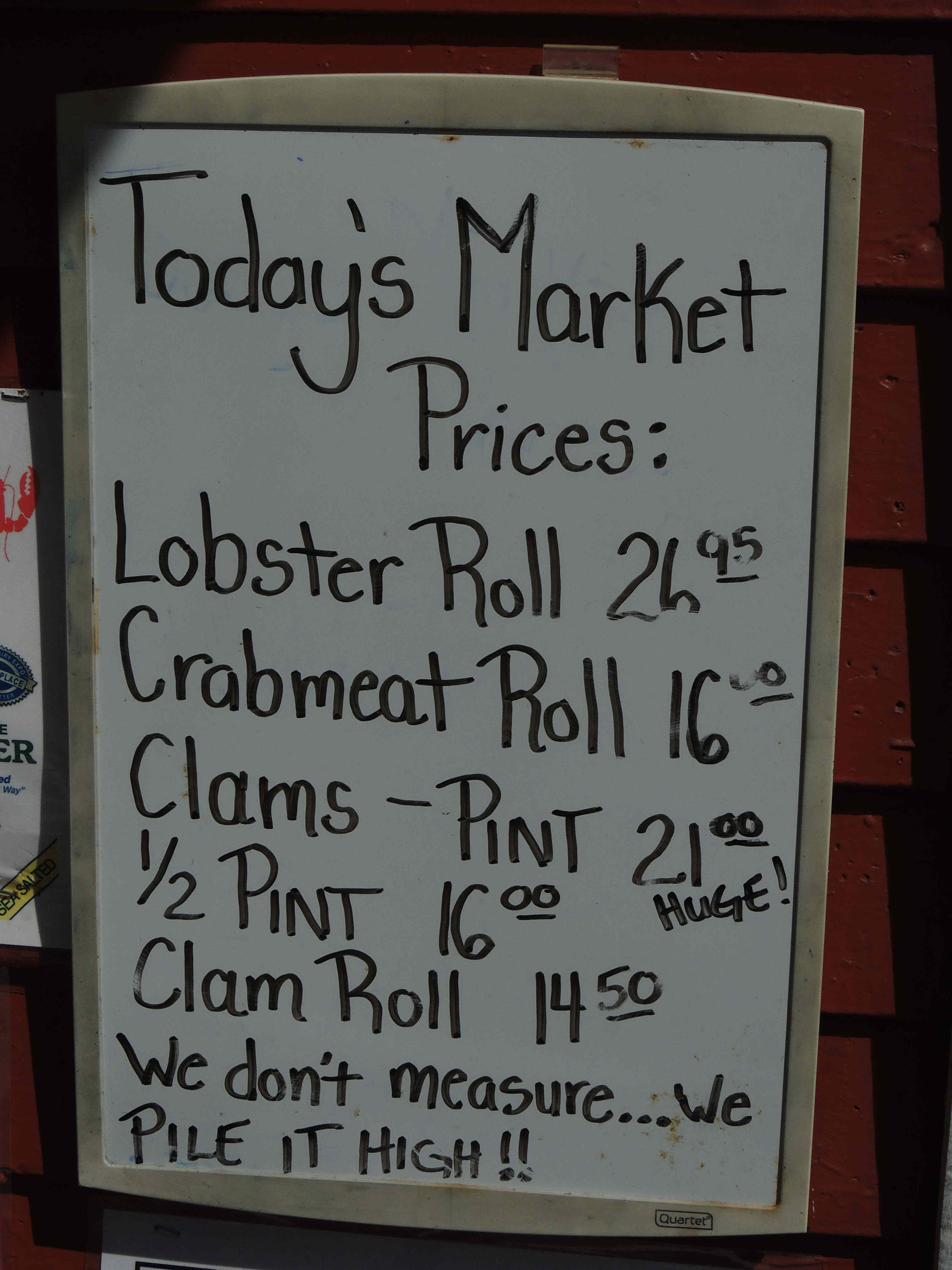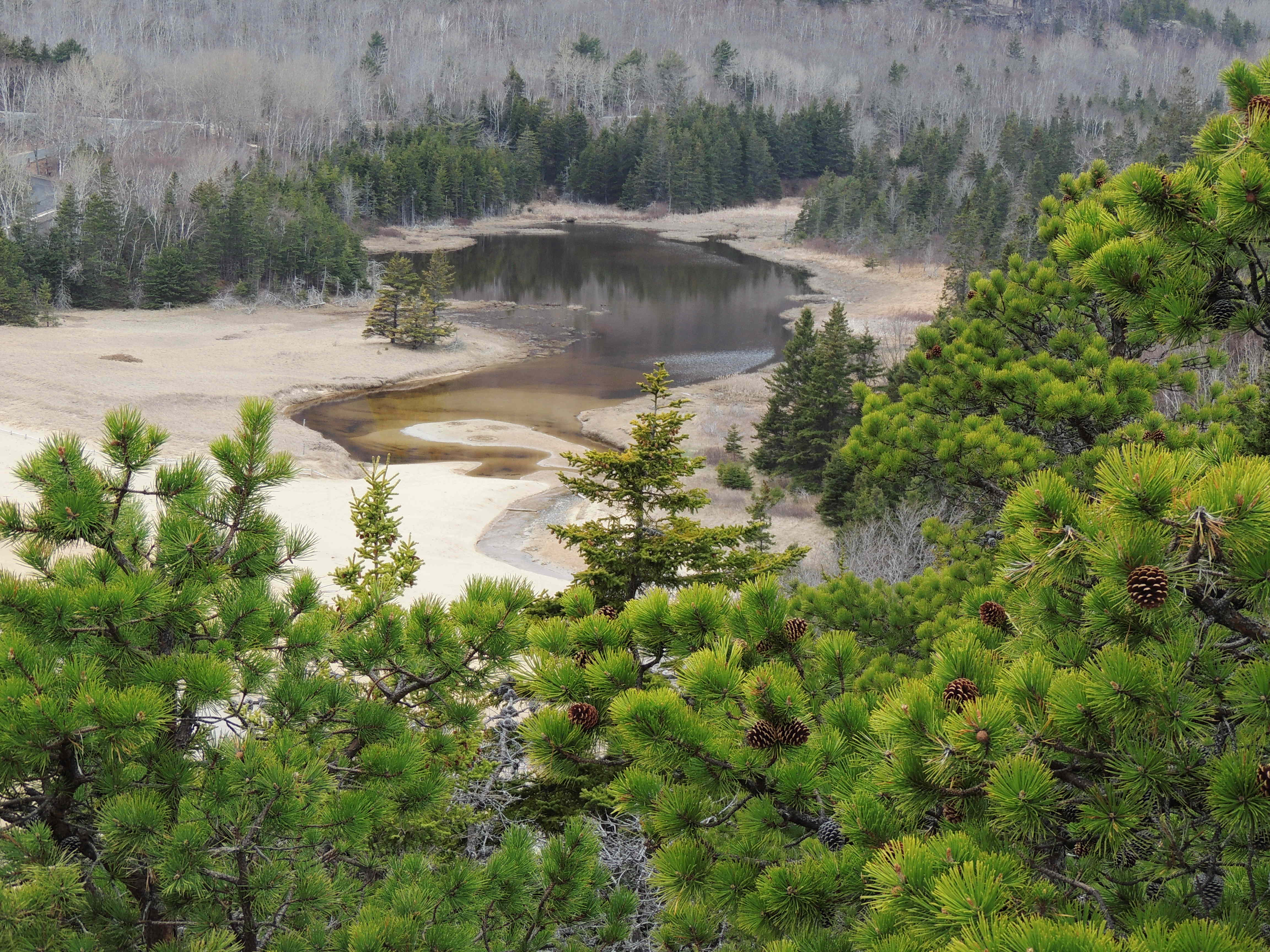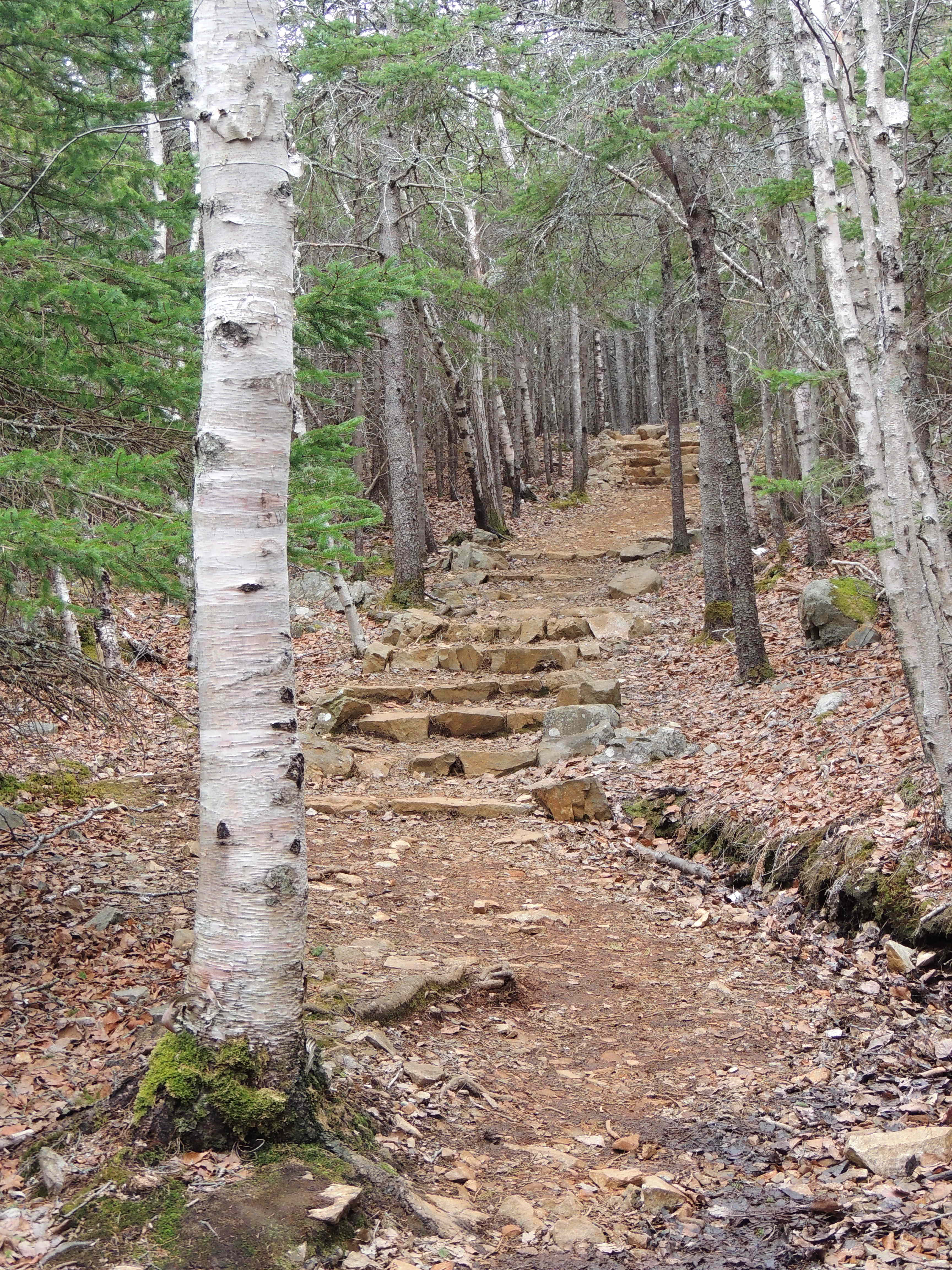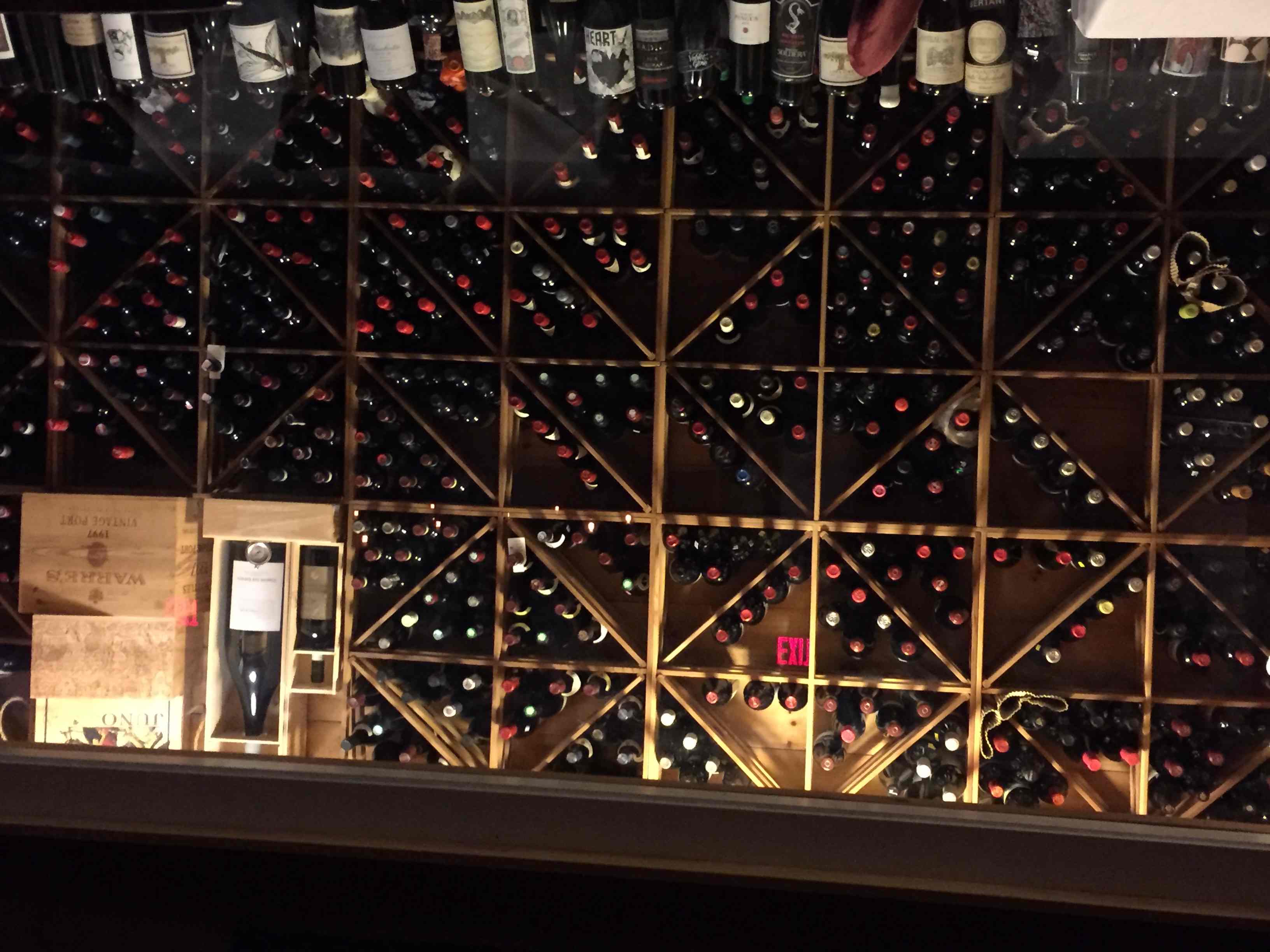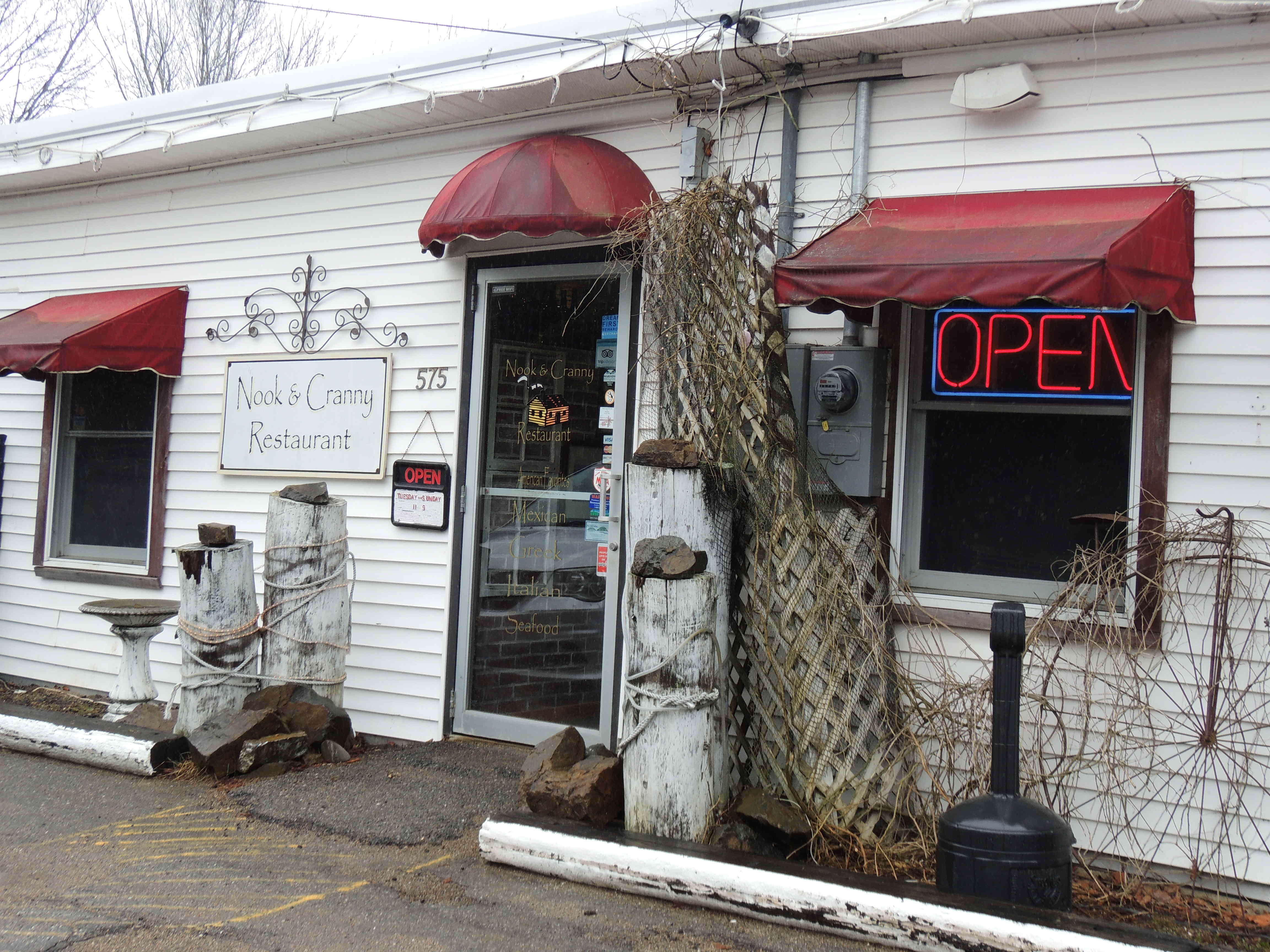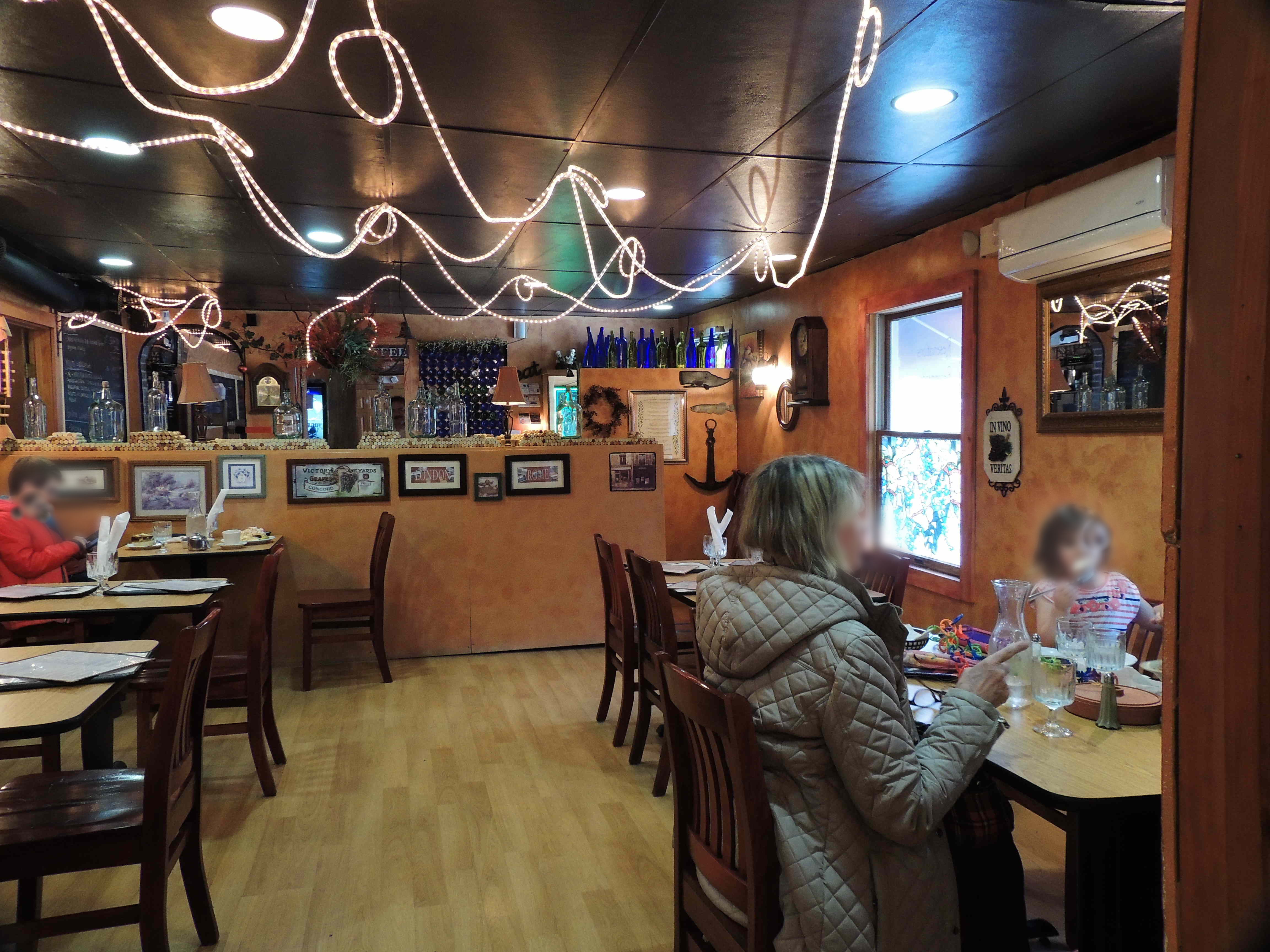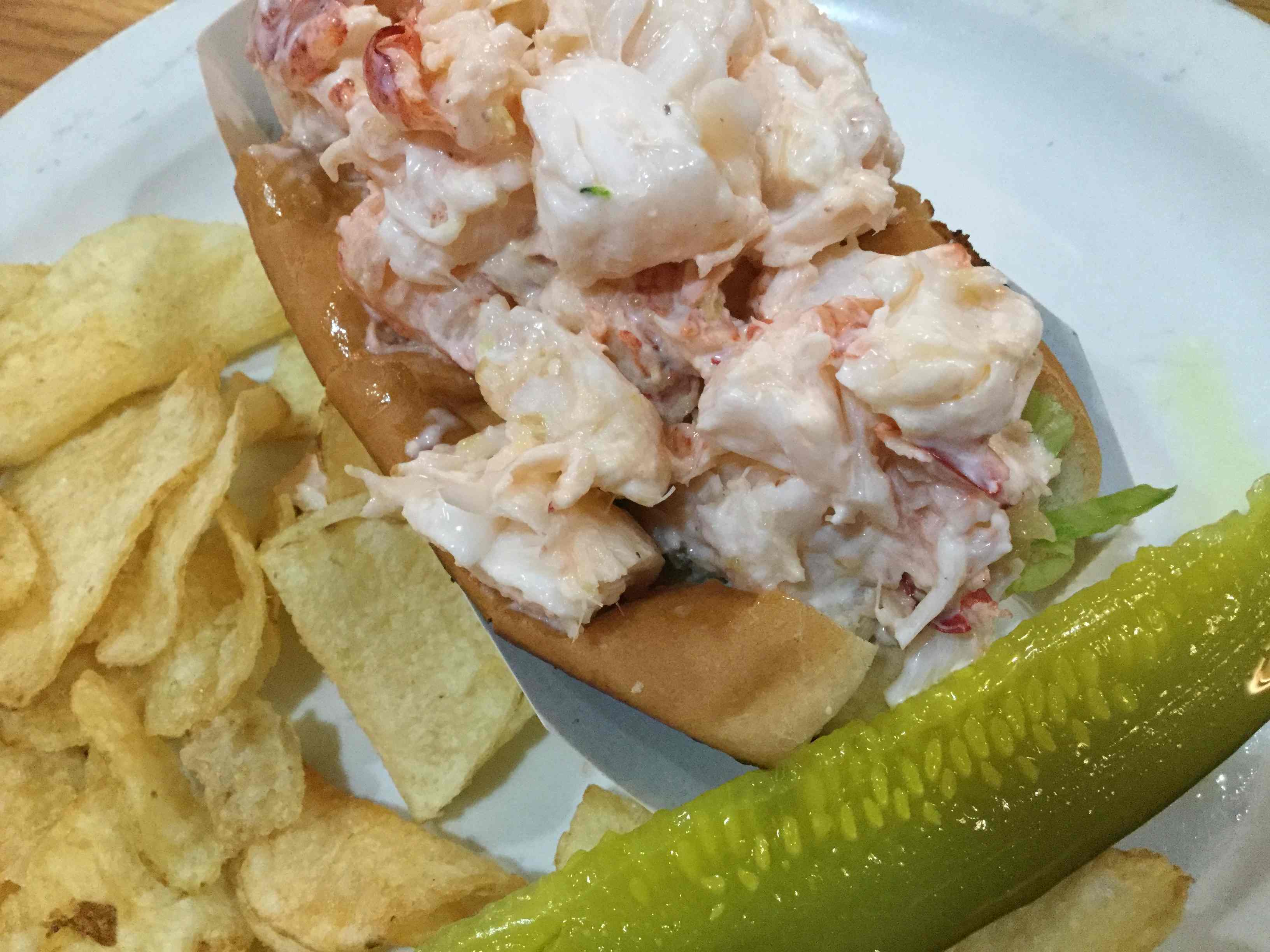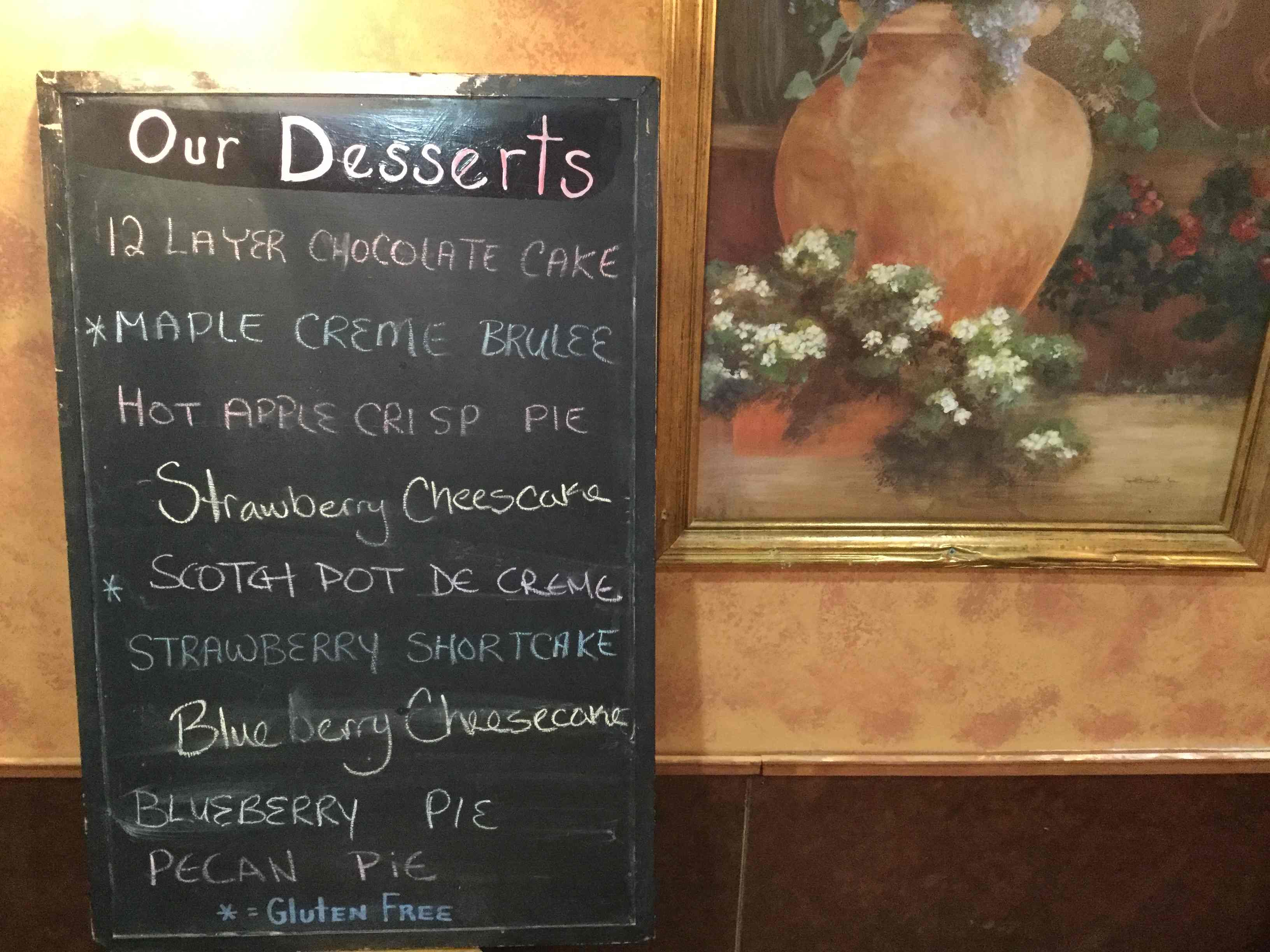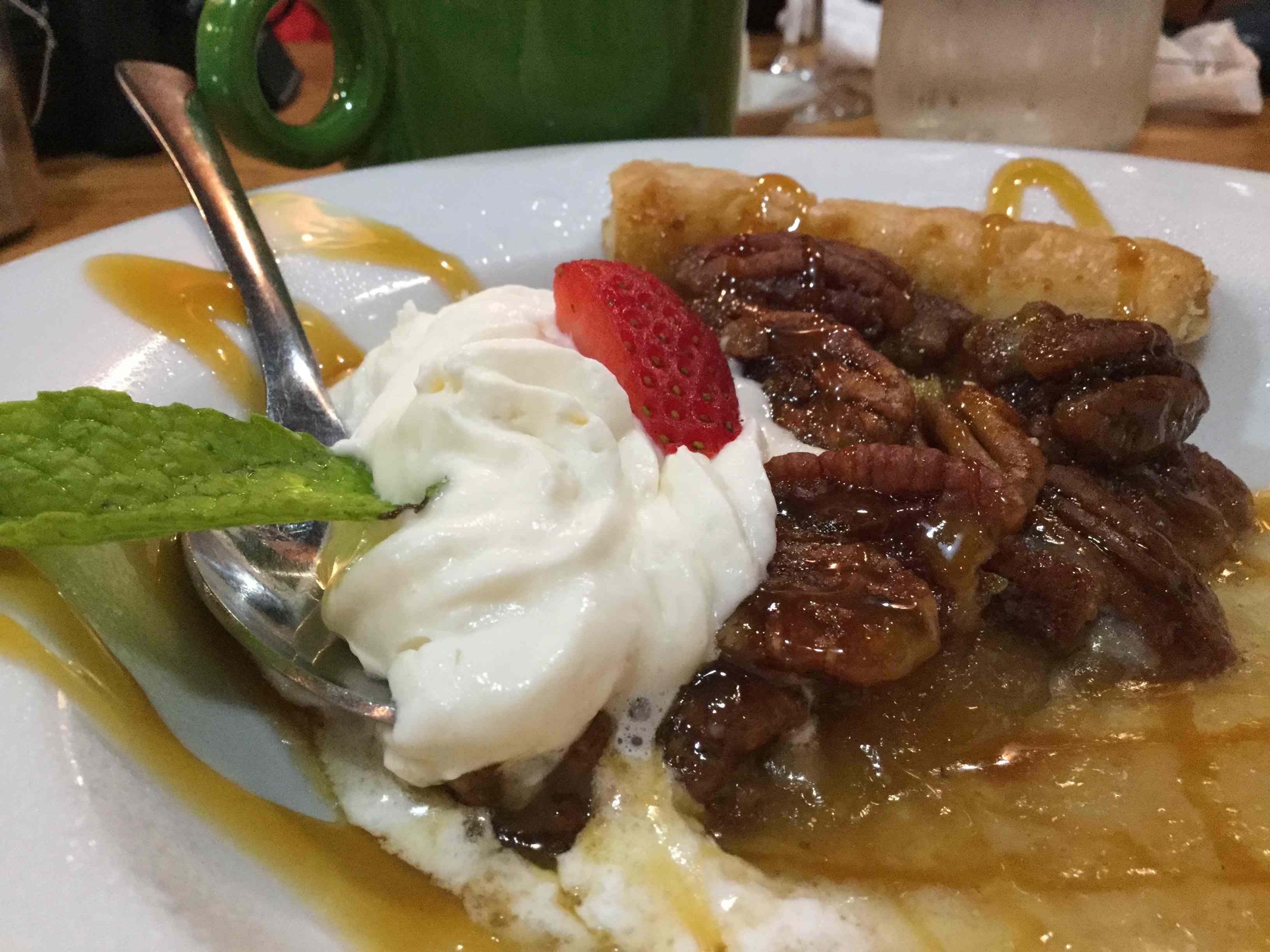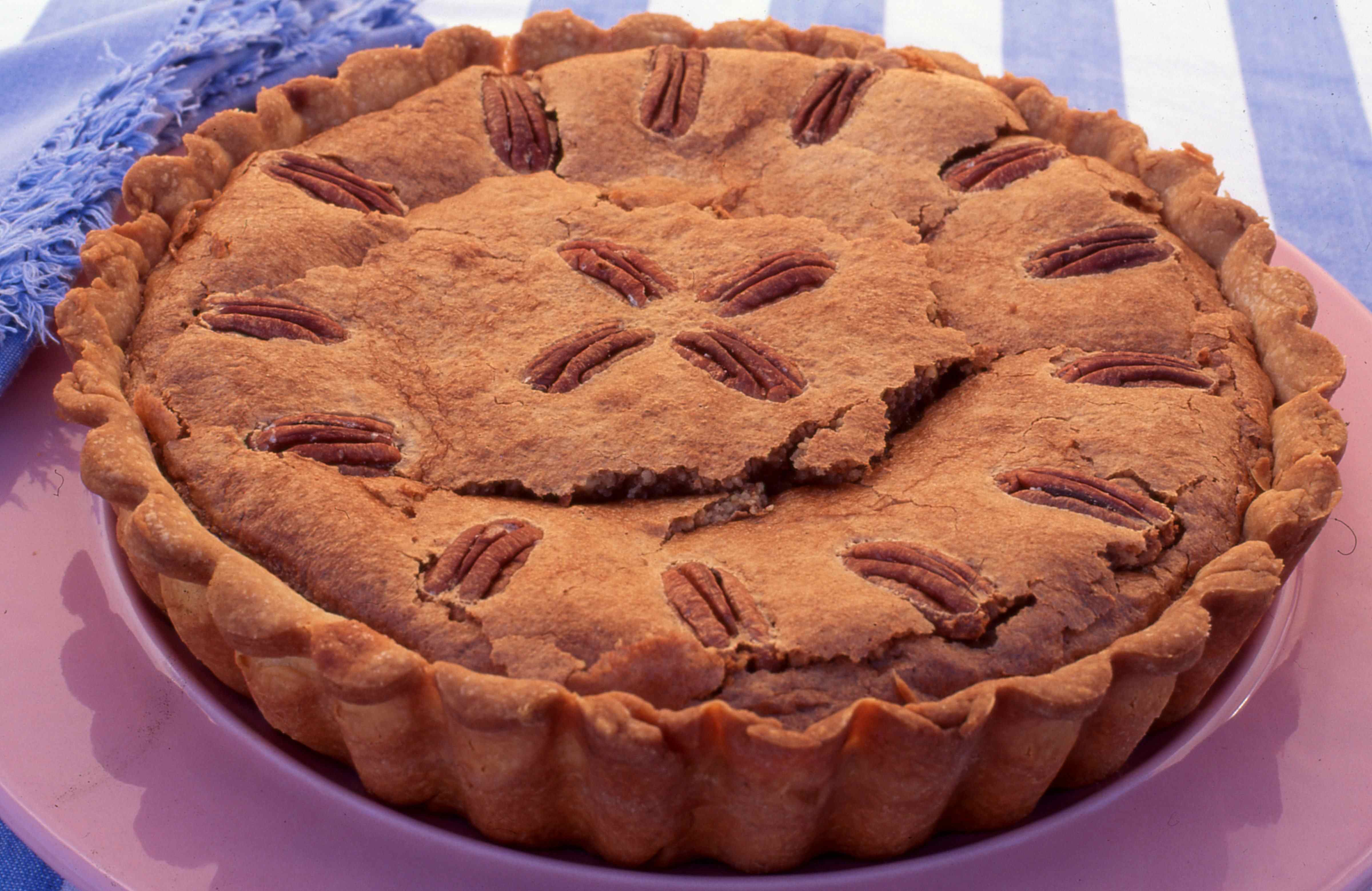This continues on from We eat at the chef’s bar!
The timing of our travels through New England and the Atlantic Provinces of Canada was based around the availability of Rhonda’s piano colleagues. It would prove to be less than the ideal time: it was the end of a hard winter, the weather would often be extremely chilly and sometimes wet, and there would be remnants of snow, even right down to the sea. The deciduous trees would still be dormant making the landscape rather sombre with grey hills and expanses dotted occasionally by the green conifers.
We were travelling late April and early May. Many of the restaurants, museums and sights would be “closed for the season”, but “opening soon”. The tourist period, it seems, would not get into full swing in many places until June. However, it didn’t daunt our enthusiasm nor did it impact much on our enjoyment. We were saved from what must be huge crowds in some places. For example, many times there would be just a few cars in a giant parking lot with room for hundreds of vehicles. Or a town might have 15 cafes and restaurants, most of them closed. The places we did find were open would give us very special attention.
The great news was that the lobster season was just beginning!
New Hampshire lakes
Having spent some time with a piano colleague in Boston, we drove north to stay with another. They live on the edge of a quintessential New England lake. This photo was taken from our bedroom at dawn on our first morning.
We would see other beautiful lakes, all seeming idyllic in the early spring weather.
New Hampshire has a very short coastline, with New Plymouth the state’s port. It has a very interesting folk museum of houses dating back into the earlier centuries of settlement.
Our hosts drove us north to the southern Maine coast. There you find the quintessential New England seaside villages. White is the dominant colour of the buildings, many of which are strikingly beautiful. The white spires of the churches indicate when a new village is coming up ahead.
The Nubble Lighthouse is on a rock island of its own.
There were some tourist shops open, in particular, those selling sweets. The only place to have lunch in one of the towns was the Union Bluff Hotel.
Our first lobster roll
We said goodbye to our hosts on a Sunday morning and started a long drive north to Bar Harbor, in northern Maine. We had decided to try lobster for lunch en route at a well-advertised and promoted destination, but we suspected it could be a tourist trap. We ordered a lobster roll and a crab roll. The cost of the lobster roll was amazing – about $35AUS. The diced seafood was served in a bread roll barely 15 cm long. The split roll was lightly toasted on the outside, the seafood was cold and lightly dressed with mayonnaise. Both rolls were fine, but not incredible and we had to eat them outside at a picnic table in a rather chilly breeze, using disposable utensils and plates. However, straight afterwards we did find a great café nearby where we could warm up with coffee and cake. We would find that as we headed north the lobster rolls would be half the price and twice as good.
The main part of Acadia National Park and its main town of Bar Harbor is accessed via a dramatic bridge. Our two days there were overcast, misty and occasionally wet so we didn’t see things at their best, especially with the denuded deciduous trees producing a sombre outlook. We did manage to complete one interesting hike on the edge of the national park.
We would notice as we travelled that the small fishing villages, and even large ones, would have several or many outlets for fresh seafood. Unlike much of Australia, the locals in New England and the Atlantic Provinces of Canada have easy and plentiful access to what is brought in by their local fishermen. We would find that these regions are a seafood lover’s paradise.
It is easy to see that Bar Harbor is a serious tourist town. However, practically all of the shops, restaurants, cafes, hotels and guesthouses were closed during our stay. One open restaurant was Gaylyn where we had one of the best fish dishes you could wish for – a generous serve of haddock straight from the town’s wharves cooked simply and lightly sauced. Just 50 metres from our hotel was the region’s most acclaimed restaurant, Havana. As luck would have it, it was reopening after the winter break on our second day in Bar Harbor. It promotes itself as serving Cuban food but in fact its menu covered a wide range of cuisines. It had an extraordinary wine list and wine cellar.
We left our hotel behind and, in driving rain, made our way back to the freeway systems that would take us into Canada.
The weather would improve, thankfully. Approaching the border crossing at Calais we were looking for a lunch spot. Several kilometres before Calais but still in Maine we saw the signs to this diner, all by itself on the edge of the highway. It seemed to be a low key establishment both outside and inside. However, the chef was clearly highly trained, offering classical and traditional American dishes. It was lunchtime though, so we ate simply: a lobster roll – at half the price of our first one in Maine – and a slice of pecan pie. The perfect lunch, and our last meal in the USA for a couple of weeks.
Pecan Pie
Pecan pie is one of the traditional dishes of the USA. This recipe is based on one obtained from Howquadale Gourmet Retreat in the 1980s.
You need about 350 grams of pastry to make a shell of sufficient size. A recipe for a shortbread-style tart shell was given in this post: sweet shortcrust pastry. This is ideal for a pecan pie. You could substitute ground pecans for the ground almonds in the pastry. Or use your own favourite recipe to make the tart shell.
For the filling, use proper maple syrup for the best taste. Golden syrup and corn syrup are less expensive but still give delicious results. The pie will set with a crusty top and almost gooey interior as it cools down. It can be served warm but is best left overnight and served cold. Make sure your pecans are not rancid – try them first and only use them if they taste clean and nutty.
Ingredients
- 1 unbaked tart shell in a tin 3.5 cm high and 25 cm diameter (or equivalent size)
- 1 2/3 cups of pecan nuts plus 15-20 pecans for decoration
- 2/3 cup brown sugar
- 3/4 cup of golden syrup or 1 cup maple syrup or corn syrup
- 4 large eggs
- 100g butter melted
- 2 1/2 tbsps rum, whisky or bourbon
- cream for serving
Method
Make the pastry, line the pie dish, cover and place in the freezer or refrigerator until required. It does not have to be par-baked.
Set oven to 180oC. Grind or process the first lot of nuts until coarse. Add the sugar and process to combine. Beat or whisk the eggs until frothy. Add the nuts to the eggs then the syrup, melted butter and liquor. Combine well. Pour filling into the tart shell. Garnish top with extra pecans, trying to place them strategically so you don’t have to cut through them when serving. Bake for 55 minutes. After 20 minutes cover the whole pie with foil, shiny side down, to stop it browning too much. The filling should puff up noticeably when it is cooked. Allow 5 more minutes if necessary.
Serve: Allow to cool, Serve warm or cold with good cream. Serves 8 to 12.
Degree of difficulty: 3/5 (moderately difficult).
Equipment: Loose-base pan.
Continued:
For a continuation of our travels, see: Canada – Maritime Provinces

